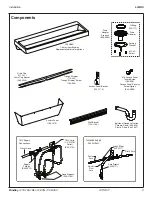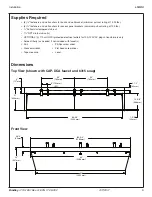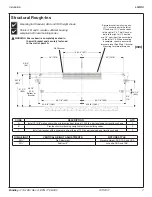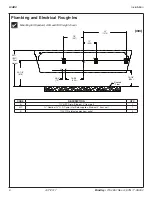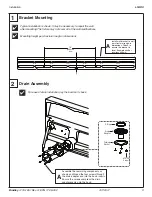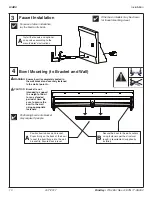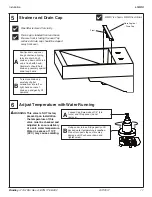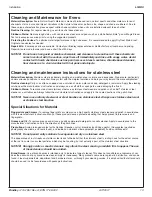
Installation
LVAD3
Bradley
• 215-1851 Rev. A; ECN 17-08-002
4/17/2017
13
Cleaning and Maintenance for Evero
Material Description: Evero Natural Quartz Material is made of bio-based resin, natural quartz and other materials to resist
chemicals, stains, burns and impact. Variations in the natural stone color, pattern, size, shape and shade are inherent. Due to
these unique characteristics, please expect subtle shade variations when units are installed adjacent to each other.
Routine Cleaning: For regular cleaning, use mild neutral base cleaners.
Stubborn Stains: Remove tough stains, with non abrasive cleaners and pads such as a white Scotch Brite
®
pad or Magic Eraser.
Test on inconspicuous area prior to using the suggested products.
Protecting the Surface: To optimize material performance in high use areas, it is recommended to apply DryTreat Stain-Proof
Original or equivalent as needed.
Repair Kits: Evero repair kits are available. Contact your Bradley representative or distributor for part numbers and pricing.
Repair kits are made to order and have a shelf life of 30 days.
NOTICE! Do not use strong acid or alkaline chemicals and cleansers to clean Evero. If these chemicals
come in contact with the surface, wipe them off immediately and rinse with soapy water. Avoid
contact with harsh chemicals such as paint remover, bleach, acetone, chloride based cleaners,
floor cleaners, etc. Avoid contact with hot pans and objects.
Cleaning and maintenance instructions for stainless steel
Material Description: Stainless steel is extremely durable, and maintenance is simple and inexpensive. Proper care, particularly
under corrosive conditions, is essential. Always start with the simplest solution and work your way toward the more complicated.
Routine cleaning: Daily or as often as needed use a solution of warm water and soap, detergent, or ammonia. Apply the cleaning
solution per the manufacturer’s instructions and always use a soft cloth or sponge to avoid damaging the finish.
Stubborn Stains: To remove stains from stainless steel use a stainless steel cleaner and polish such as Ball
®
stainless steel
cleaner or a soft abrasive. Always follow the manufacturer’s instructions and apply in the same direction as the polish lines.
NOTICE! Never use ordinary steel wool or steel brushes on stainless steel. Always use stainless steel wool
or stainless steel brushes.
Special Situations for Material
Fingerprints and Smears: To remove fingerprints or smears use a high quality stainless steel cleaner and polish in accordance
with the manufacturer’s instructions. Many of these products leave a protective coating that helps prevent future smears and
fingerprints.
Grease and Oil : To remove grease and oil use a quality commercial detergent or caustic cleaner. Apply in accordance to the
manufacturer’s instructions and in the direction of the polish lines.
Precautions: Avoid prolonged contact with chlorides (bleaches, salts), bromides (sanitizing agents), thiocyanates (pesticides,
photography chemicals, and some foods), and iodides on stainless steel equipment, especially if acid conditions exist.
NOTICE! Do not permit salty solutions to evaporate and dry on stainless steel.
The appearance of rust streaks on stainless steel leads to the belief that the stainless steel is rusting. Look for the actual source
of the rust in some iron or steel particles which may be touching, but not actually a part of the stainless steel structure.
NOTICE! Strongly acidic or caustic cleaners may attack the steel, causing a reddish film to appear. The use
of these cleaners should be avoided.
Brand Names: Use of brand names is intended only to indicate a type of cleaner. This does not constitute an endorsement, nor
does the omission of any brand name cleaner imply its inadequacy. Many products named are regional in distribution, and can be
found in local supermarkets, department and hardware stores, or through your cleaning service. It is emphasized that all products
should be used in strict accordance with package instructions.



